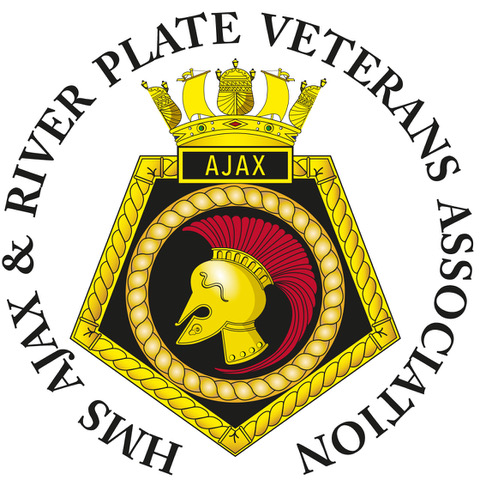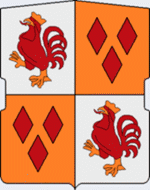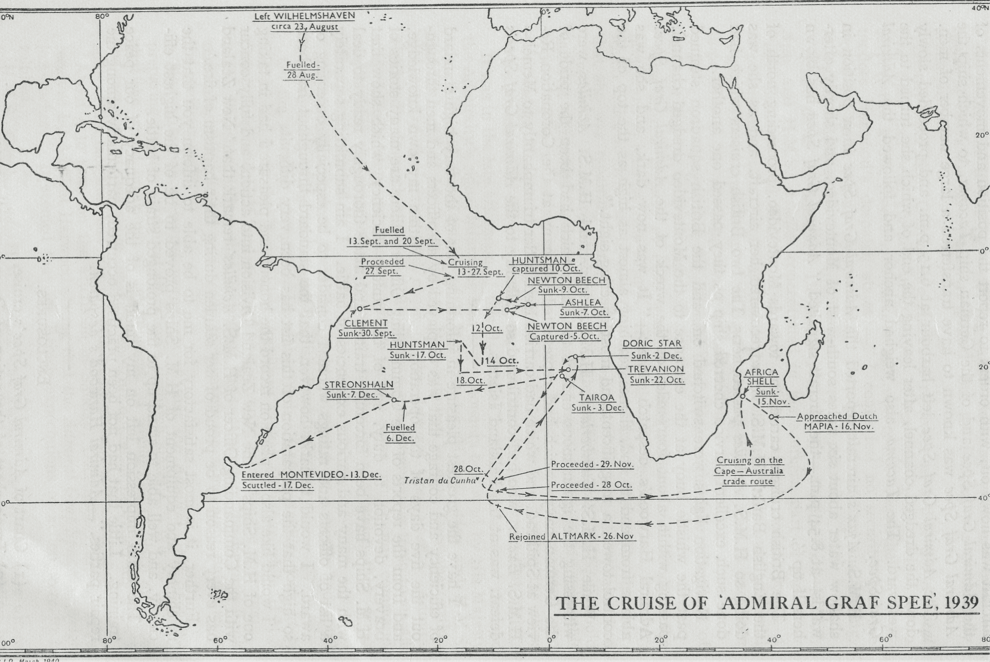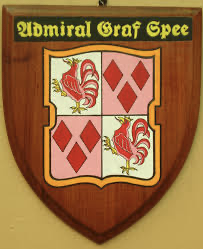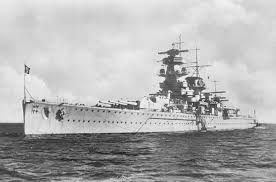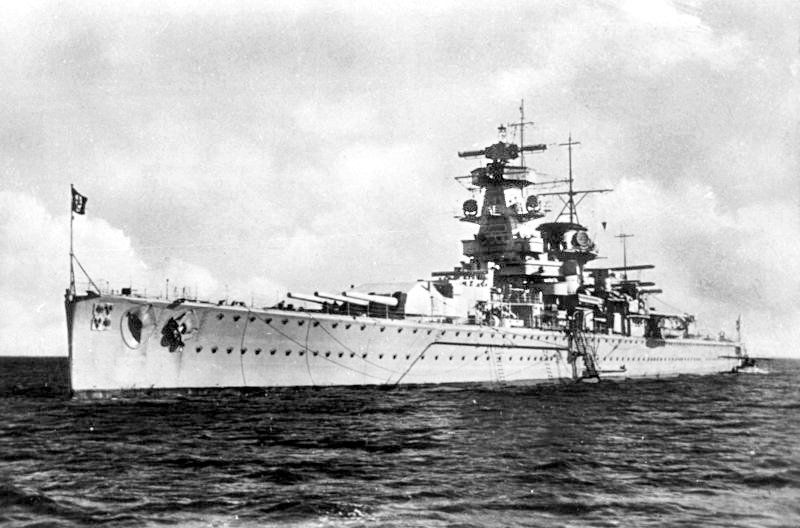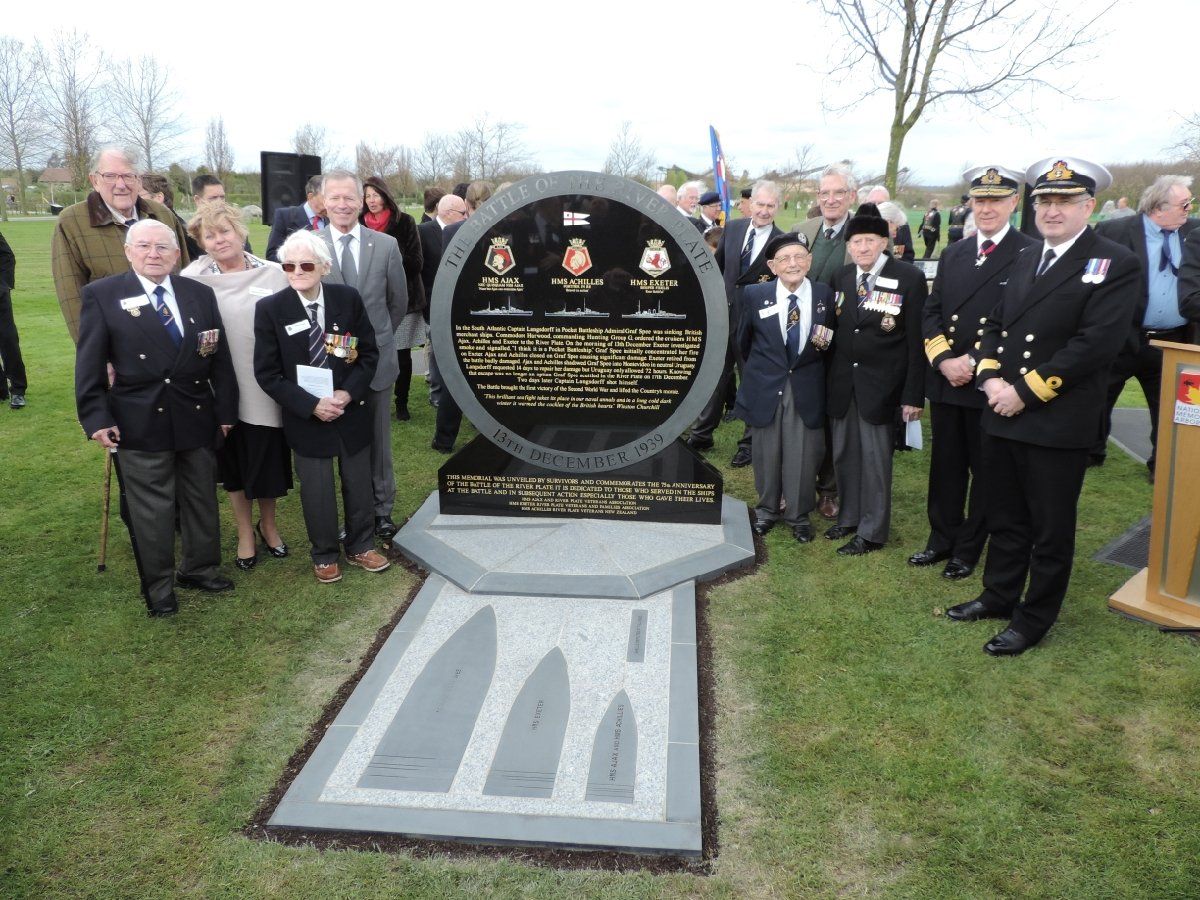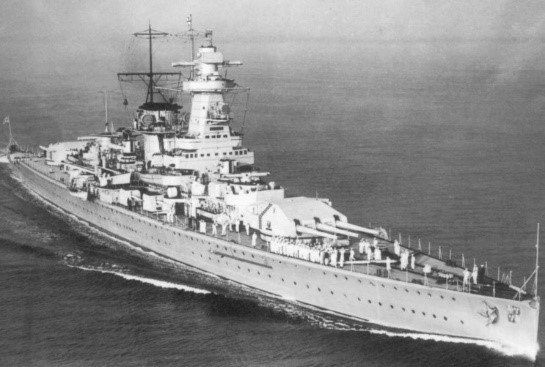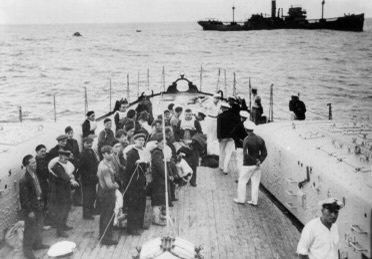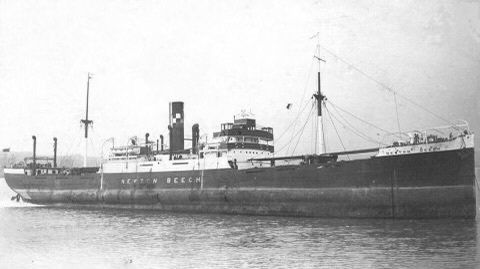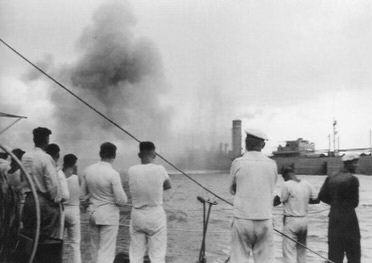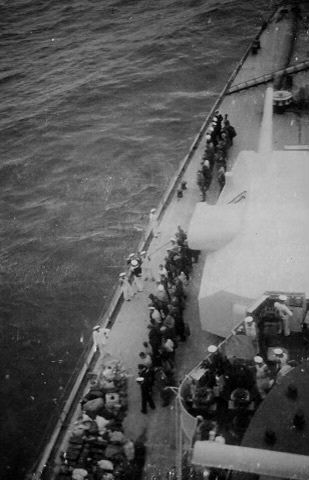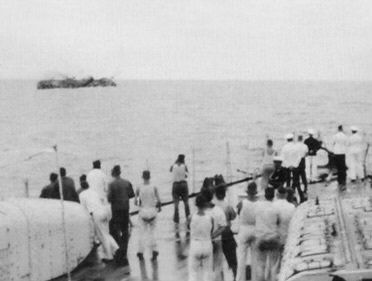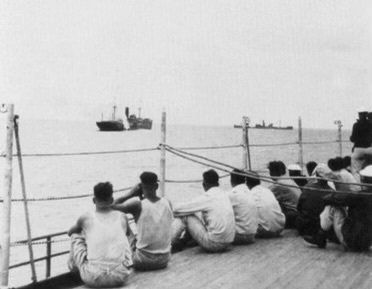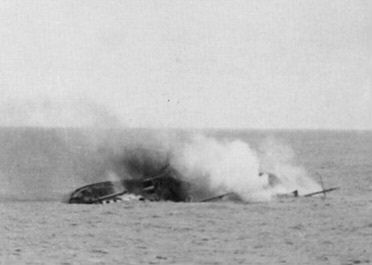Panzerschiff Admiral Graf Spee
The German Kriegsmarine’s Panzerschiff (armoured ship) Admiral Graf Spee
was the last of the three ships of the Deutschland-class, coined Pocket Battleships by the British. Her sister ships were the Deutschland
commissioned in 1933, later renamed the Lützow* and the Admiral Sheer
commissioned in 1934.
*Hitler ordered the name change to avoid any embarrassing propaganda should she be sunk carrying the name of the Fatherland.
The Treaty of Versailles ended WW1 and one of the articles, 190, sought to restrict future German rearmament and limited replacement ships to 10,000 tons in the case of armoured ships. Regardless, the Deutschland-class cruisers weighed in at 14,650 long tons and over 16,020 long tons full load with a length of 610 feet, 186 metres.
[cf. Exeter 8,390/10,490 long tons and 175 metres length; Ajax & Achilles 7,270/9,740 long tons and 169m length]
She was laid down
in Wilhelmshaven, Germany 1 October 1932
and built by Reichsmarinewerft. On 30 June 1934 the Admiral Graf Spee was launched by Countess Huberta von Spee, daughter of late Vice Admiral von Spee after whom the ship was named.
Admiral Maximilian von Spee had commanded the East Asia Squadron at the start of the First World War and inflicted a heavy defeat on the Royal Navy at the Battle of Coronel, Chile, on 1 November 1914. However, the Royal Navy exacted revenge at the Battle of the Falkland Islands 8 December 1914 when almost the entire German fleet was lost and von Spee and his two sons were killed.
The Admiral Graf Spee was Commissioned 6 January 1936.
Armed with six 280mm (11 in) guns in two triple fore and aft turrets “A” Anton & “B” Bruno, Admiral Graf Spee was designed to out-gun any cruiser fast enough to catch her and out-run any Battleship that could out-gun her.
The 280mm (11 inch) guns could fire her 300kgs shells to a maximum distance of 35kms and the weight of one of her broadsides (total shells fired from all guns at once) exceeded the combined broadsides of Exeter, Ajax & Achilles. A pictorial representation of the differences in size between Graf Spee’s 11 inch shells compared to Exeter’s 8 inch and Ajax & Achilles’ 6 inch shells can be found on the pavement at the River Plate Memorial at the National Memorial Arboretum.
The ship was fitted with much innovative equipment, one of the reasons leading to the decision to scuttle rather than fall into enemy hands, including early but limited radar. [For greater insight into the ship’s design the reader can do no better than refer to the book “Command Decisions. Langsdorff & the Battle of the River Plate – see bibliography]
Following her commissioning the Graf Spee became the flagship for the German Navy and undertook extensive sea trials for the first 3 months under the command of Captain zur See Conrad Patzig, replaced in October 1937 by Walter Warzecha until October 1938.
Pre-war, Graf Spee provided non-intervention patrols during the 1936-38 Spanish Civil War and in May 1937, on return from her Spanish patrols, she attended, between 15 and 23 May, the Coronation Naval Review for King George V1 at Spithead in the Solent off Portsmouth and 100 of the crew marched through the streets. There followed further patrols including fleet manoeuvres and a visit to Sweden.
Before Captain zur See Hans Langsdorff
took command of the Graf Spee on 2 October 1938, having been promoted to Captain on 1 January 1937, he was already familiar with the ship having sailed in her as part of the staff of Admiral Boehm who was flying his flag aboard the Graf Spee.
Under Langsdorff’s command several further visits and reviews took place until finally returning to Germany. Firstly Hamburg, then docking for general maintenance at Kiel; in early August she sailed to Wilhelmshaven and there took on provisions in preparation for the inevitable war. Additional crew boarded as did four captains of merchant ships and specialist radio operators.
The ship’s log records:
21-8-39
Wilhelmshaven
Ship’s time 2100 [1900 local]
Ship raised anchor, speed 17 knots; Wind W, force 2; sky overcast, visibility good, temperature 21oC
She was heading for the South Atlantic and 10 days later she received her war orders from the German Government in Berlin:
Directive Number One for the Conduct of War
“The German Kriegsmarine will operate against merchant shipping, with England as the focal point … Any favourable opportunity of an effective attack on concentrated units of the British Navy, particularly on battleships or aircraft carriers will be exploited … Warships are to rely on the assistance of logistical supply ships whilst they are at sea.”
Graf Spee headed for the merchant sea lanes of her designated area to await the declaration of war – that would soon come. On 1 September 1939 Germany invaded Poland and 2 days later Britain & France declared war on Germany – it would last six years.
Both sides commenced commerce raiding and over the next 3 months Graf Spee would sink a total of nine Allied merchant ships totalling 50,089 gross registered tons – brief details can be found HERE.
The last point of Directive Number One for the Conduct of War, "Warships are to rely on the assistance of logistical supply ships whilst they are at sea”
was important.
Although the Graf Spee had a range of over 30,000kms she would still need to replenish fuel, victuals, shells and many other items, and also to off-load prisoners. Germany had no friendly ports in the South Atlantic at which to replenish so was totally reliant upon her own supply ship the Altmark. This highly successful arrangement was made possible by prearranged coded meeting points, thus avoiding radio transmissions, allowing the two ships to pinpoint the date, time and location of the rendezvous exactly – quite remarkable given the huge area of the South Atlantic.
Further information can be found here https://pzsadmgrafspee.jimdo.com/
Although the Graf Spee Association
has no website the President Enrique Rodolfo Dick is happy to receive individual enquiries about the Graf Spee and Crew through his personal website contact form https://www.enriquerodolfodick.com/contact
The Admiral Graf Spee was a large ship with a crew of over 1000. Those that were interned in Argentina after the Graf Spee was scuttled were processed by the police and a photographic record taken. The list of these 1055 officers and men are listed below. In addition to these will be those who were buried in Montevideo and interned there. I am indebted to the Graf Spee Association for sharing this list.
Graf Spee Crew List
Graf Spee Uruguay list
In addition, six officers remained in Uruguay, one the Senior Surgeon to tend the injured, and five at the request of the German Legation hoping that they would be attached to other German Missions in South America - in fact they were interned. The German Merchant captains onboard Graf Spee were left in Montevideo. Also five wireless staff were put ashore, secretly to establish a wireless intelligence station on the east coast of South America. 28 sailors were in hospital (two of whom died some weeks later) and four were reported as being in gaol (they may have been the officers)
Those that died at The Battle of the River Plate can be found HERE
Montevideo & Buenos Aires Cementerio list
Pancherschiff Admiral Graf Spee
Builder: Reichsmarinewerft, Wilhelmshaven
Laid down: 1 October 1932
Launched: 30 June 1934 by Countess Huberta von Spee (daughter of late Vice Admiral von Spee)
Commissioned: 6 January 1936
Scuttled, 17 December 1939
Class and type: Deutschland-class cruiser
Displacement:
14,650 long tons (14,890t) (design)
16,020 long tons (16,280t) (full load)
Length: 186m (610ft 3in)
Beam: 21.65m (71ft)
Draft: 7.34m (24ft 1in)
Installed power: 53,260 shp
Propulsion: 2 propellers; 8 × diesel engines
Speed: 28.5 knots (52.8km/h; 32.8mph)
Range: 16,300 nautical miles (30,200km; 18,800 miles) at 18.69 knots (34.61km/h; 21.5mph)
Complement: As built:
33 officers
586 enlisted
After 1935:
30 officers
921–1,040 enlisted
Radar: fitted with prototype Seetakt Radar
Armament:
6× 28cm (11in) in 2 triple turrets ‘A Anton’ forward & ‘B Bruno’ aft
8× 15cm (5.9in) in single turrets
8× 53.3cm (21in) torpedo tubes
Armour:
Main turrets: 140mm (5.5in)
Belt: 100mm (3.9in)
Main deck: 45–70mm (1.8–2.8in)
Aircraft carried: 1 × Heinkel He 60 floatplane replaced in 1939 by 1 (+spare) Arado AR 196*; 1 × catapult
[*Not operable at time of The Battle of the River Plate]
Video of the scuttling of Graf Spee
The Capture and sinking of the SS Newton Beech & the SS Ashlea by Graf Spee - October 5 and 7 1939
Graf Spee photograph signed by several of the released crew of captured British Merchant Ships.

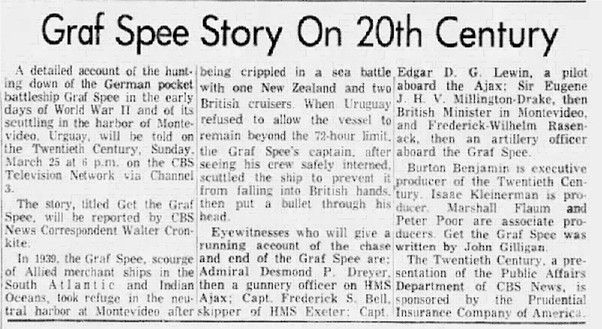
Newspaper Clip regarding below Documentary
Montreal Gazette, March 24, 1962 p25:
